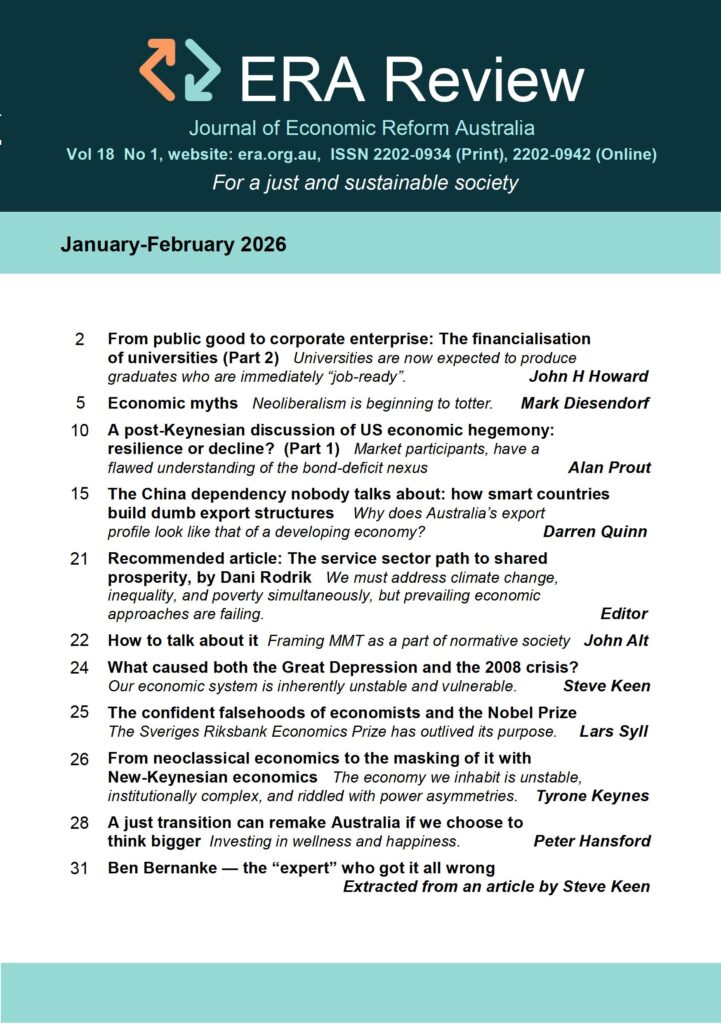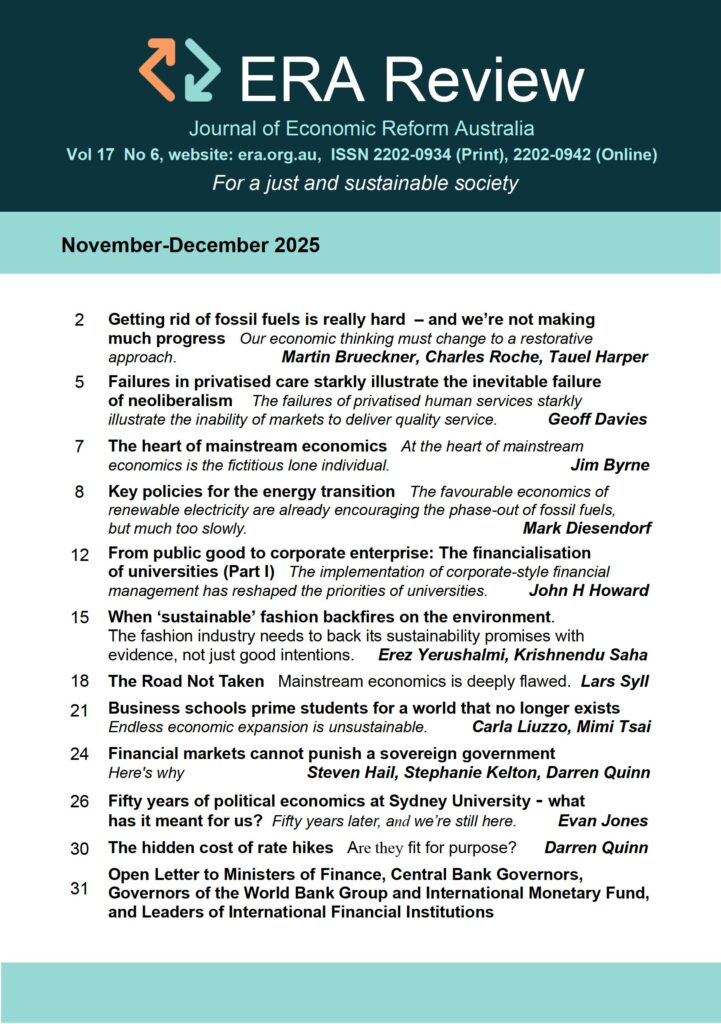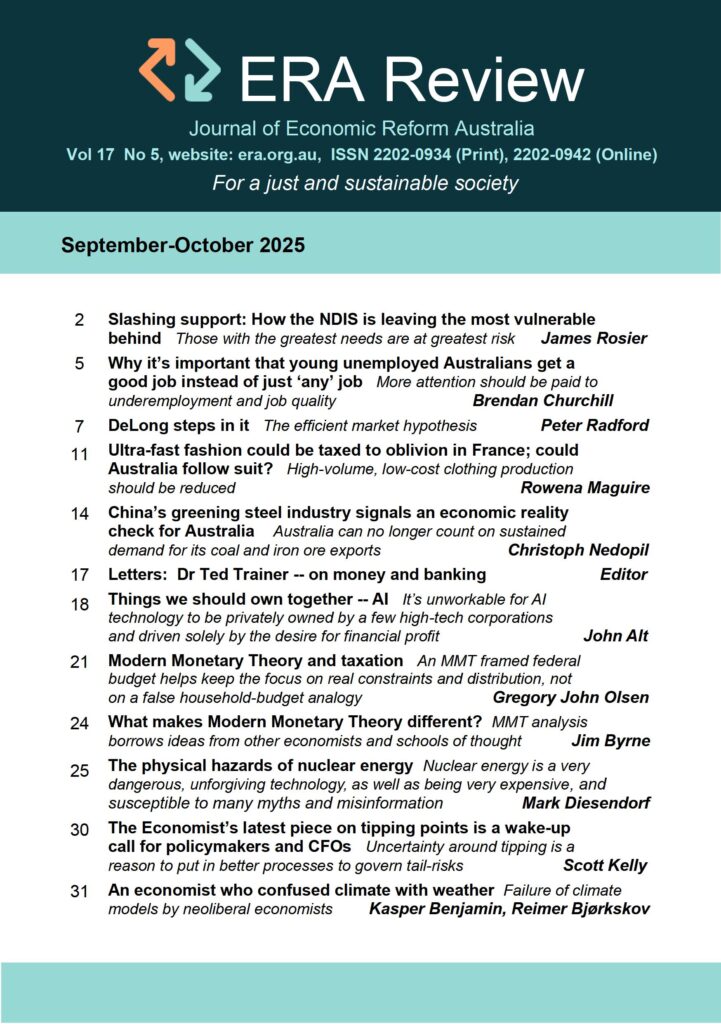Labour productivity and real wages: an update
Wayne McMillan
Australian workers have experienced a considerable decline in real wages and overall productivity, due to a drop in the capital to labour ratio, in respect of working longer hours. It’s a fact that wages just haven’t kept up with rising living costs, despite longer hours being worked. In essence, the decline in labour productivity has been less than the decline in real wages.
This analysis relies on the wages of producers (the wage costs producers face) as distinct from consumer wages (the purchasing power of the wages consumers receive) as the measure of wages. This is because businesses have control over the prices they set and wages they offer; but have limited control over the prices people pay for other goods and services. Their capacity to pay wages de ends on the prices they receive for their goods and services rather than the other prices consumers pay. While changes in the prices set by producers and the prices paid by consumers often track closely, there are reasons for them to diverge – in particular, due to the prices of imports, taxes, and subsidies.
Considering the economy as a whole, there is evidence that the growth in labour productivity exceeds growth in producer wages – a signal of wage decoupling. Wage decoupling across the economy is estimated to be 54 percentage points per year between 1994-95 and 2022-23 (figure 4). This is a slight decrease on wage decoupling estimated between 1994-95 and 2021-22 last year (56 percentage points)
Given significant differences in labour use, capital use, methods of production and output across different industries, an aggregate view of Australia’s economy masks significant differences in wage and productivity growth within different industries. The mining and agriculture industries are unique as they are predominantly export-focussed industries. The boom in the terms of trade, fuelled by increasing commodity prices, experienced in Australia throughout the 2000s, and again since 2016, has increased producer prices (the prices that Australian businesses receive for their output) relative to consumer prices (the prices Australians pay for their goods and services). Rising commodity prices depress real producer wages, driving a wedge between them and real consumer wages. As the rising terms of trade depress real producer wages but with little direct effect on productivity wages and productivity ‘decouple’.
Over 2022-23, labour productivity fell by -3.5%, largely because of a sharp increase in hours worked. Real producer wages fell more (-4.6%) largely because of rising cost-of-living pressures. As the fall in real wages exceeded that of labour productivity, there has been an increase in wage decoupling over the past 28 years, with productivity growth outstripping wage growth by 0.18% per year (up from 0.15% in 2021-22). Despite this uptick in decoupling, the underlying connection between labour productivity and wages remains intact, emphasising the importance of improving labour productivity to support a rebound in real wage growth.
Labour productivity for the whole economy fell by 3.7% in 2022-23
- Labour productivity fell because output growth failed to keep pace with a record increase in hours worked.
- High hours worked also led to a historical decline in the capital-labour ratio (4.9%). This meant workers had access to less capital on average, which weighed down labour productivity.
- The 2022-23 declines in labour productivity and the capital-labour ratio were historical outliers.
- During the pandemic, productivity rose rapidly but last financial year saw that productivity growth disappear.
- By the end 2022-23, labour productivity was about the same as before the pandemic for the whole economy (0.8%), but well above the pre-pandemic market sector level (2.4%).
Across the whole economy, a gap remained between growth in real wages and labour productivity
- In 2022-23, labour productivity and real producer wages both fell by 3.7%.
- Overall wage decoupling has decreased to 0.54 percentage points per annum since 1994-95 (down from 0.56 percentage points between 1994-95 and 2021-22 estimated last year).
- Wage decoupling in two industries – mining and agriculture – dominate the aggregate results, but employ only 5% of the workforce.
- Wage decoupling for the rest of the workforce is 0.18% per annum since 1994-95. The fall in wages over 202223 for the rest of the workforce (4.6%) exceeded the fall in labour productivity (3.5%).
Source: Productivity Commission estimates using: ABS (Australian System of National Accounts, 2022-23, Cat. no. 5204.0., table 46; Labour Account Australia, September 2023, Cat. no. 6150.0.55.003, industry summary tables; Labour Force, Australia, DetailedDecember 2023, Cat. no. 6291.0.55.001., table EQ05; Consumer Price
References:
ABS (Australian Bureau of Statistics) 2023, Estimates of Industry Multifactor Productivity, 202223 Financial Year, ABS, https://www.abs.gov.au/statistics/industry/industry-overview/estimatesindustry-multifactor-productivity/latest-release (accessed 13 December 2023).
PC (Productivity Commission) 2022, 5-year Productivity Inquiry: The Key to Prosperity, Interim report, Canberra, July. —— 2023a, PC Productivity Insights: Bulletin 2023, July.
—— 2023b, Productivity growth and wages: a forensic look.
PC Productivity Insights —— 2023c, Quart. Prod. Bull., Dec 2023, PC Productivity Insights, ACT Wei, H. 2012, The Industry Sources of Australia’s Productivity Slowdown, Australian Bureau of Statistics. Index, Australia, Cat. no. 6401.0., table 1).






























